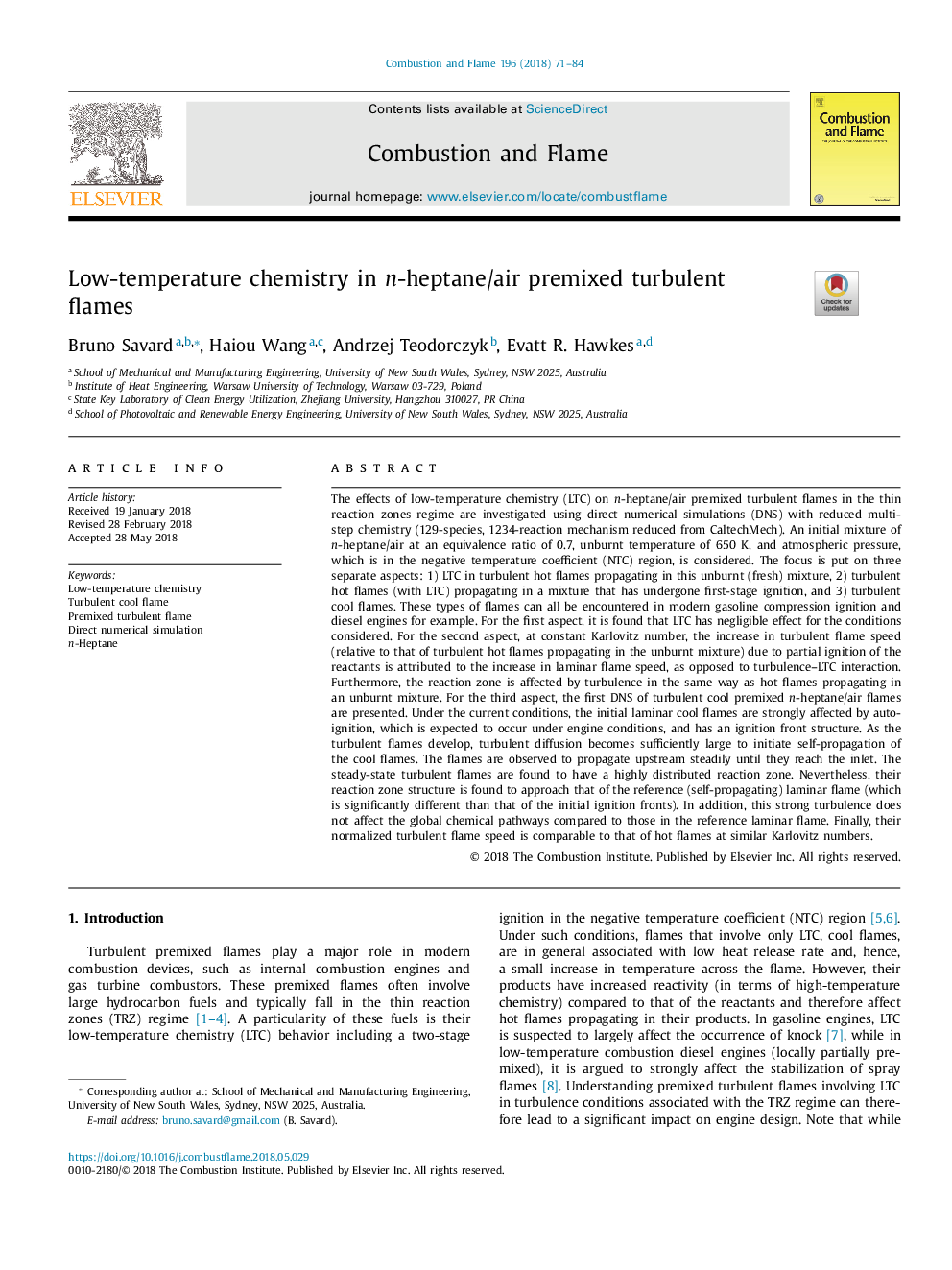| Article ID | Journal | Published Year | Pages | File Type |
|---|---|---|---|---|
| 6593359 | Combustion and Flame | 2018 | 14 Pages |
Abstract
The effects of low-temperature chemistry (LTC) on n-heptane/air premixed turbulent flames in the thin reaction zones regime are investigated using direct numerical simulations (DNS) with reduced multi-step chemistry (129-species, 1234-reaction mechanism reduced from CaltechMech). An initial mixture of n-heptane/air at an equivalence ratio of 0.7, unburnt temperature of 650Â K, and atmospheric pressure, which is in the negative temperature coefficient (NTC) region, is considered. The focus is put on three separate aspects: 1) LTC in turbulent hot flames propagating in this unburnt (fresh) mixture, 2) turbulent hot flames (with LTC) propagating in a mixture that has undergone first-stage ignition, and 3) turbulent cool flames. These types of flames can all be encountered in modern gasoline compression ignition and diesel engines for example. For the first aspect, it is found that LTC has negligible effect for the conditions considered. For the second aspect, at constant Karlovitz number, the increase in turbulent flame speed (relative to that of turbulent hot flames propagating in the unburnt mixture) due to partial ignition of the reactants is attributed to the increase in laminar flame speed, as opposed to turbulence-LTC interaction. Furthermore, the reaction zone is affected by turbulence in the same way as hot flames propagating in an unburnt mixture. For the third aspect, the first DNS of turbulent cool premixed n-heptane/air flames are presented. Under the current conditions, the initial laminar cool flames are strongly affected by auto-ignition, which is expected to occur under engine conditions, and has an ignition front structure. As the turbulent flames develop, turbulent diffusion becomes sufficiently large to initiate self-propagation of the cool flames. The flames are observed to propagate upstream steadily until they reach the inlet. The steady-state turbulent flames are found to have a highly distributed reaction zone. Nevertheless, their reaction zone structure is found to approach that of the reference (self-propagating) laminar flame (which is significantly different than that of the initial ignition fronts). In addition, this strong turbulence does not affect the global chemical pathways compared to those in the reference laminar flame. Finally, their normalized turbulent flame speed is comparable to that of hot flames at similar Karlovitz numbers.
Related Topics
Physical Sciences and Engineering
Chemical Engineering
Chemical Engineering (General)
Authors
Bruno Savard, Haiou Wang, Andrzej Teodorczyk, Evatt R. Hawkes,
